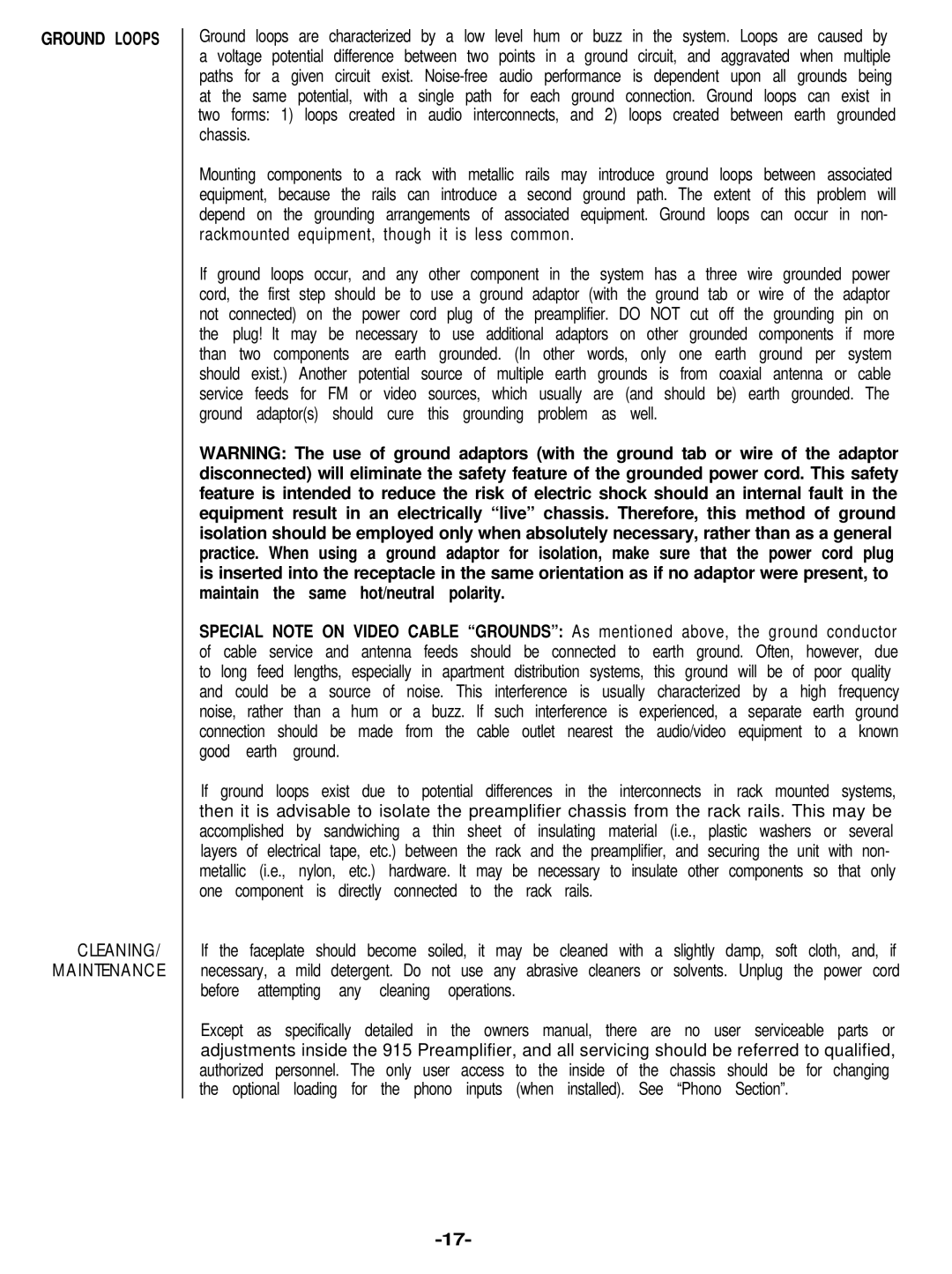0915P, 915 specifications
The Hafler 915 and 0915P amplifiers are remarkable products from Hafler, a company known for its high-quality audio equipment. These amplifiers are engineered to deliver precise sound reproduction, making them ideal for both home audio setups and professional applications.One of the standout features of the Hafler 915 is its robust power output. With a capability of delivering 200 watts per channel into an 8-ohm load, it ensures that even the most demanding speakers can be driven effortlessly. The 0915P model, a variant of the Hafler 915, offers similar power specifications with additional features appealing to both audiophiles and professionals in the audio field.
The amplifiers utilize Hafler's proprietary technologies to provide impressive dynamic range and low distortion levels. The innovative circuitry employed in these models enhances signal integrity, which translates to a more accurate representation of the original audio source. Users can expect high fidelity sound that captures the nuances of music and dialogue with clarity.
Another important characteristic of the Hafler 915 and 0915P is their versatility in connectivity options. The amplifiers come equipped with multiple input configurations, including balanced and unbalanced connections. This flexibility allows them to be integrated seamlessly into various audio systems, whether for studio monitoring or home theater use.
The design of the Hafler 915 and 0915P amplifiers reflects both aesthetic appeal and functional efficiency. Featuring a sleek chassis and a user-friendly interface, these models are not only well-built but also visually pleasing. The robust heat dissipation mechanisms ensure long-term performance and reliability, making them suitable for extended use in demanding environments.
In summary, the Hafler 915 and 0915P amplifiers embody a blend of power, precision, and versatility. Their high-quality sound reproduction capabilities, coupled with innovative technologies and solid construction, make them excellent choices for anyone seeking to elevate their audio experience. Whether in a professional studio or a home audio setup, these amplifiers stand out as top contenders in the realm of audio amplification.
